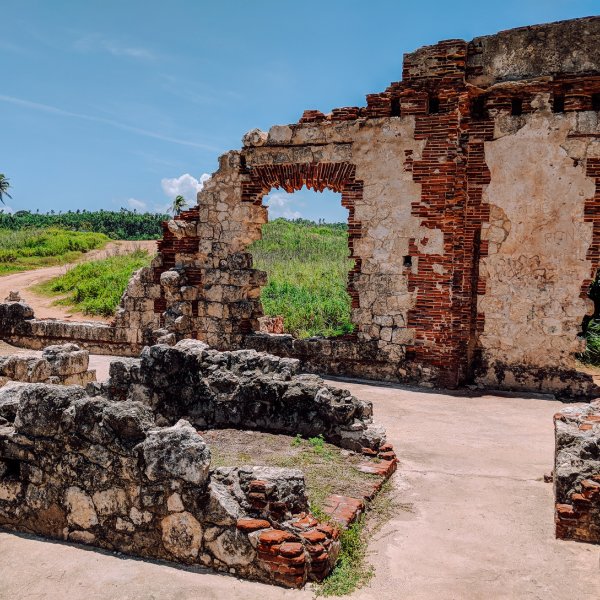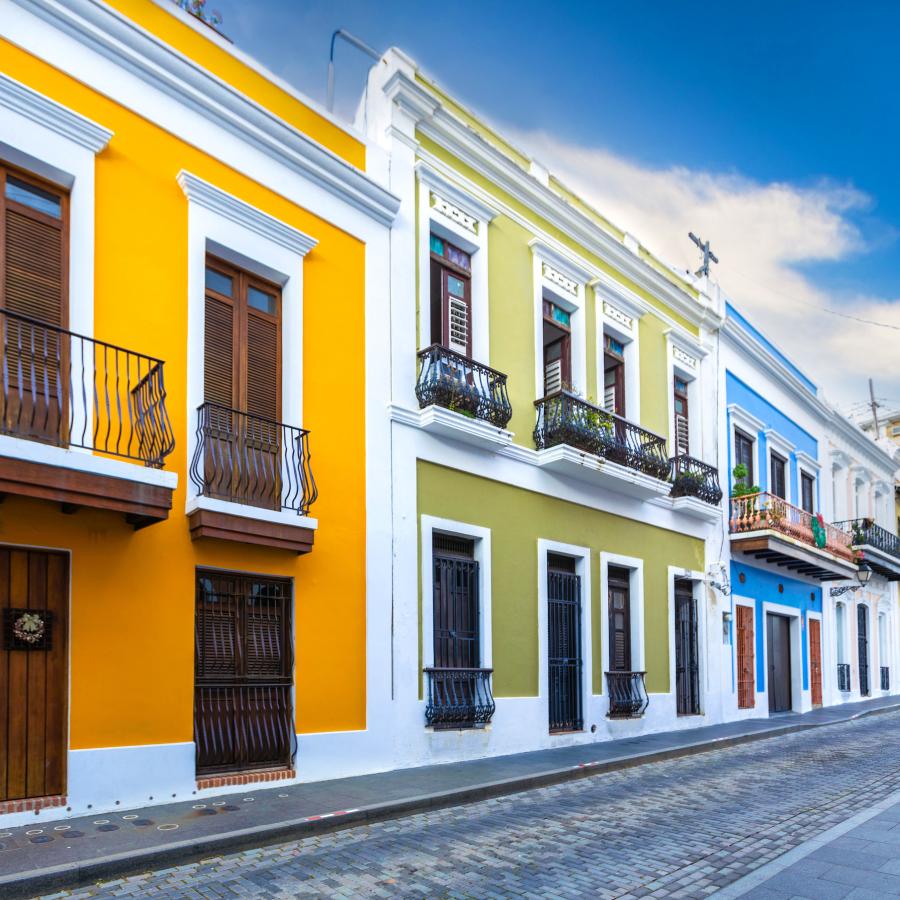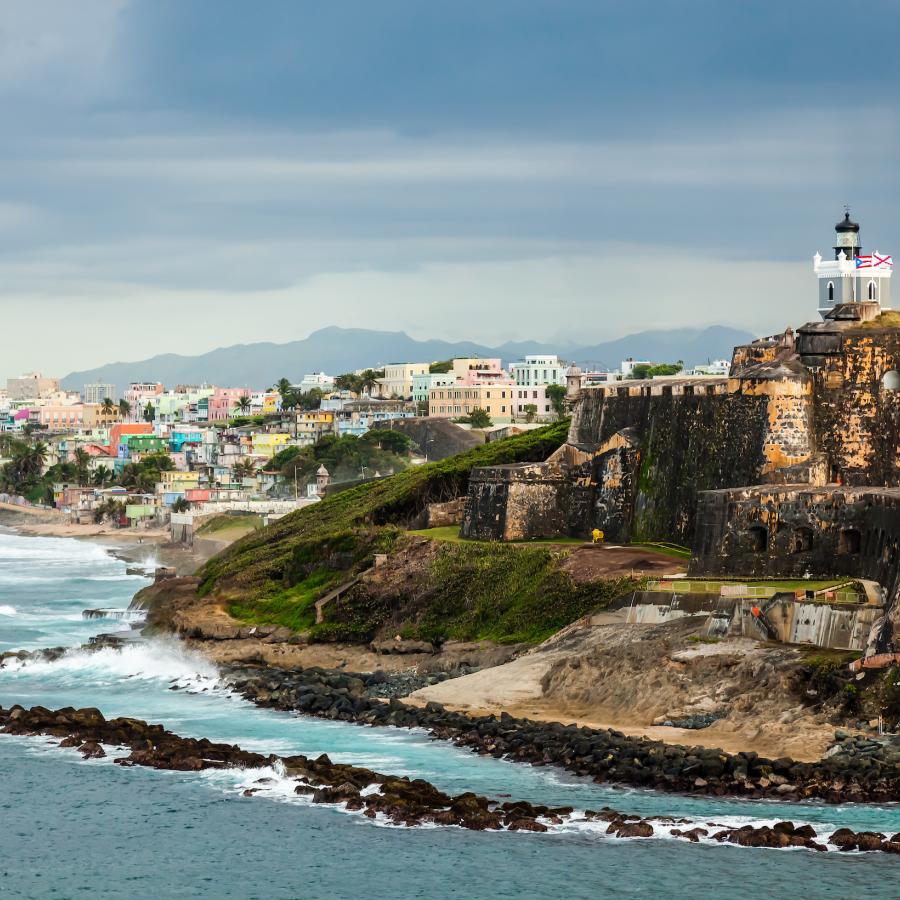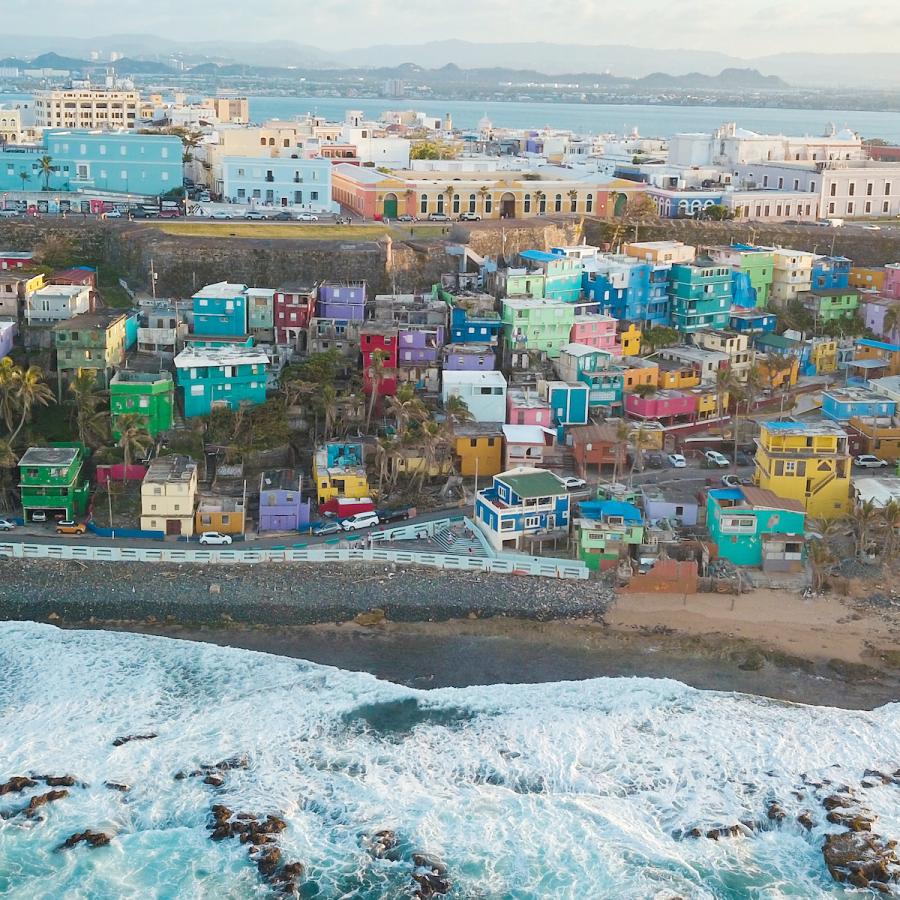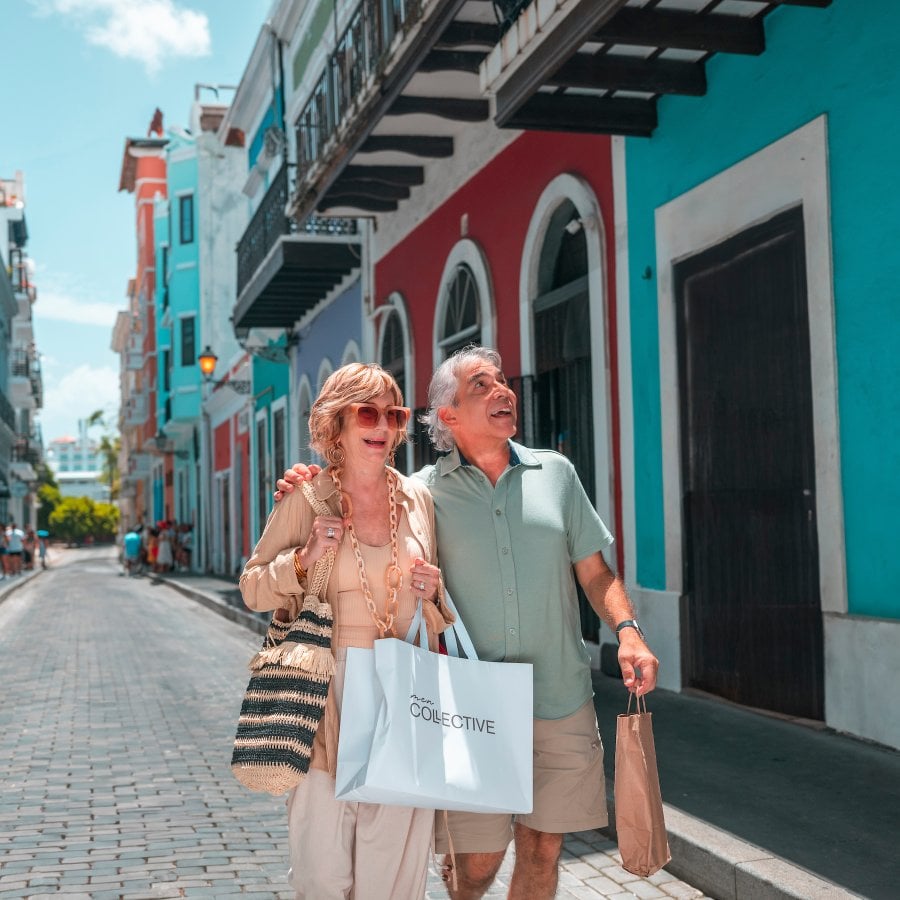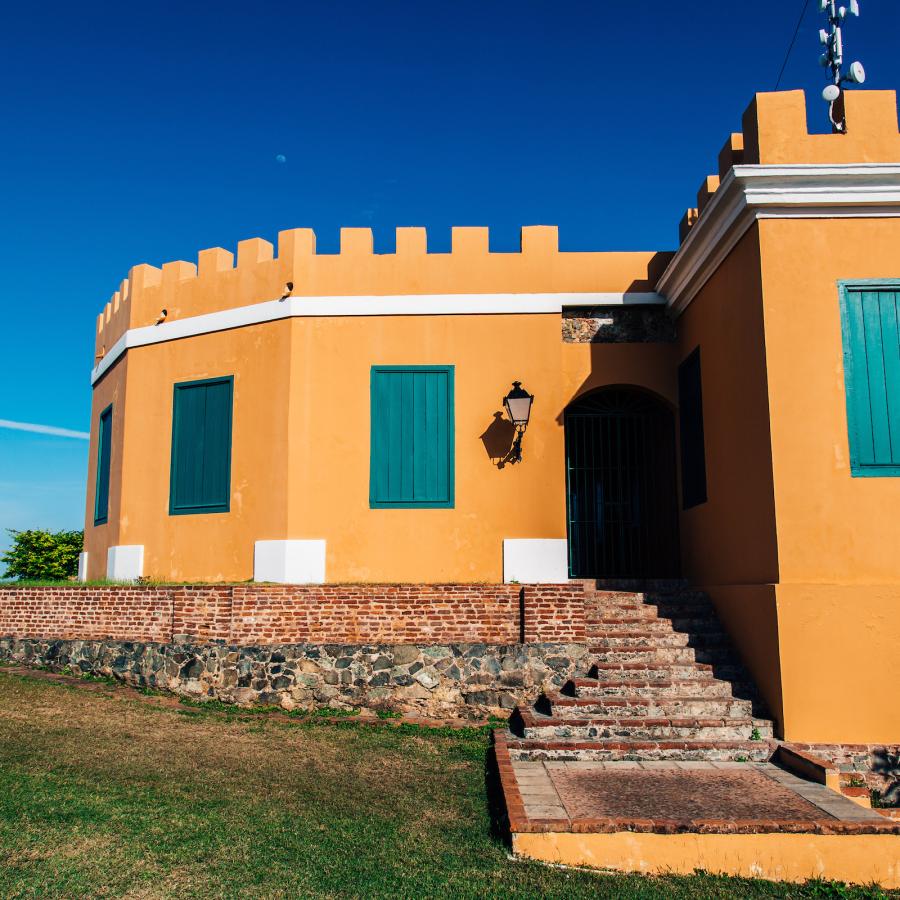The pastel-colored colonial architecture and military forts of Old San Juan blend harmoniously with the modern to create a truly unique and authentic Puerto Rican experience. Whether you’re a history lover, a cruise passenger visiting for the day, or someone searching for the ultimate photo to remember their trip by, here is a list of landmarks and iconic places not to miss while visiting this remarkable city.
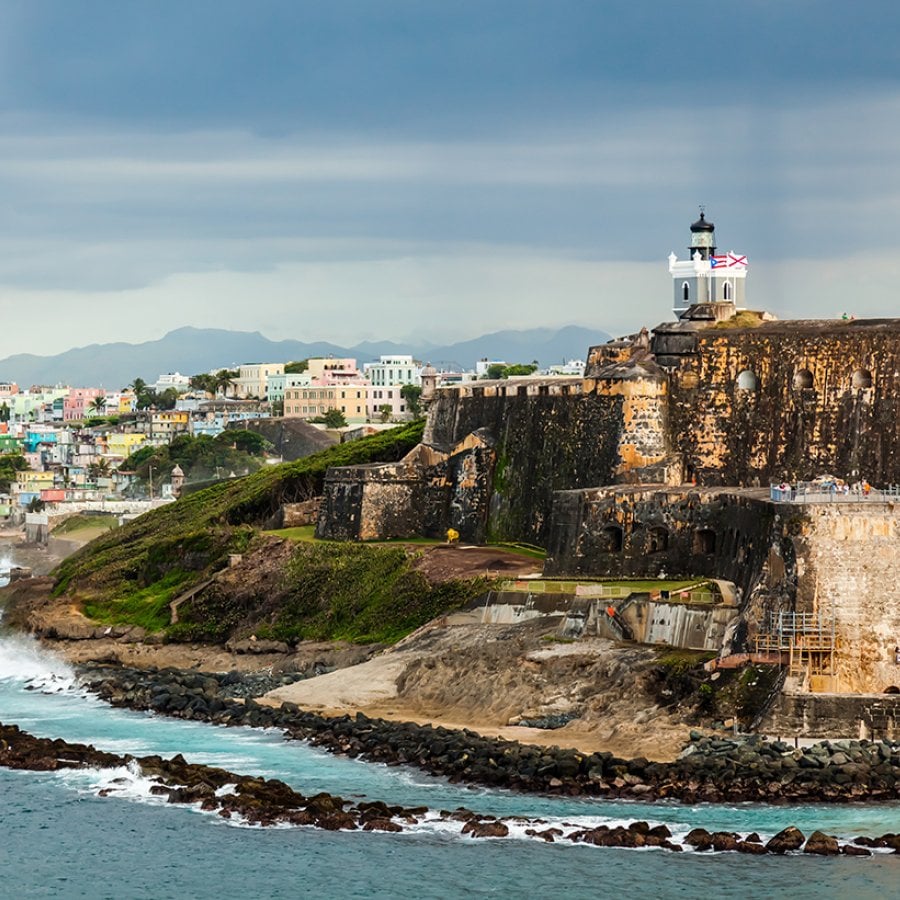
Stroll around the Spanish forts of El Morro and San Cristóbal, where you will have excellent photo opportunities.
Castillo San Felipe del Morro
Better known as El Morro, this impressive citadel is one of the largest fortifications built by the Spaniards in the Caribbean during the 16th century. Made up by six staggered levels that integrate barracks, dungeons, and storerooms, this fortress was designed to protect the city from attacks made by sea, and it still has some of the original cannons facing the ocean. In its history, El Morro was never defeated by the enemy.
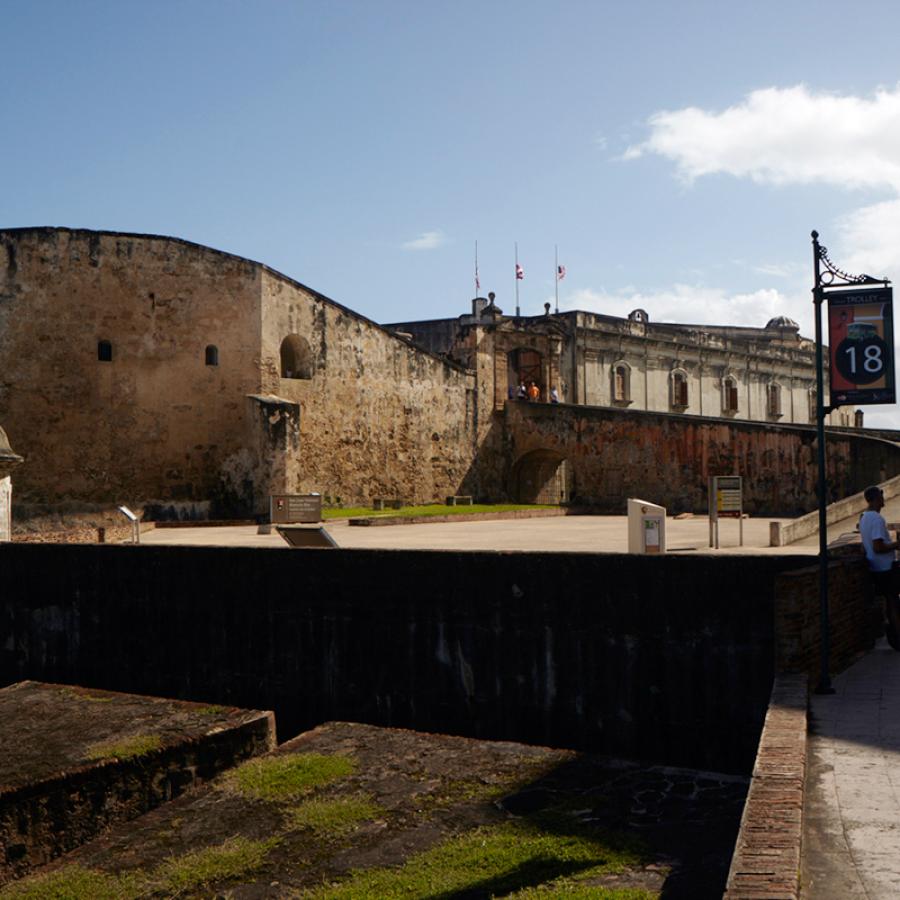
Castillo San Cristóbal in Old San Juan.
Castillo San Cristóbal
Standing guard at the eastern gate, this fortress was built to guard the city from enemies approaching by land. Covering over 27 acres, this fortification is the largest one made by the Spaniards in the New World. This castle holds the famous Garita del Diablo, center to many military tales and stories in the Island.
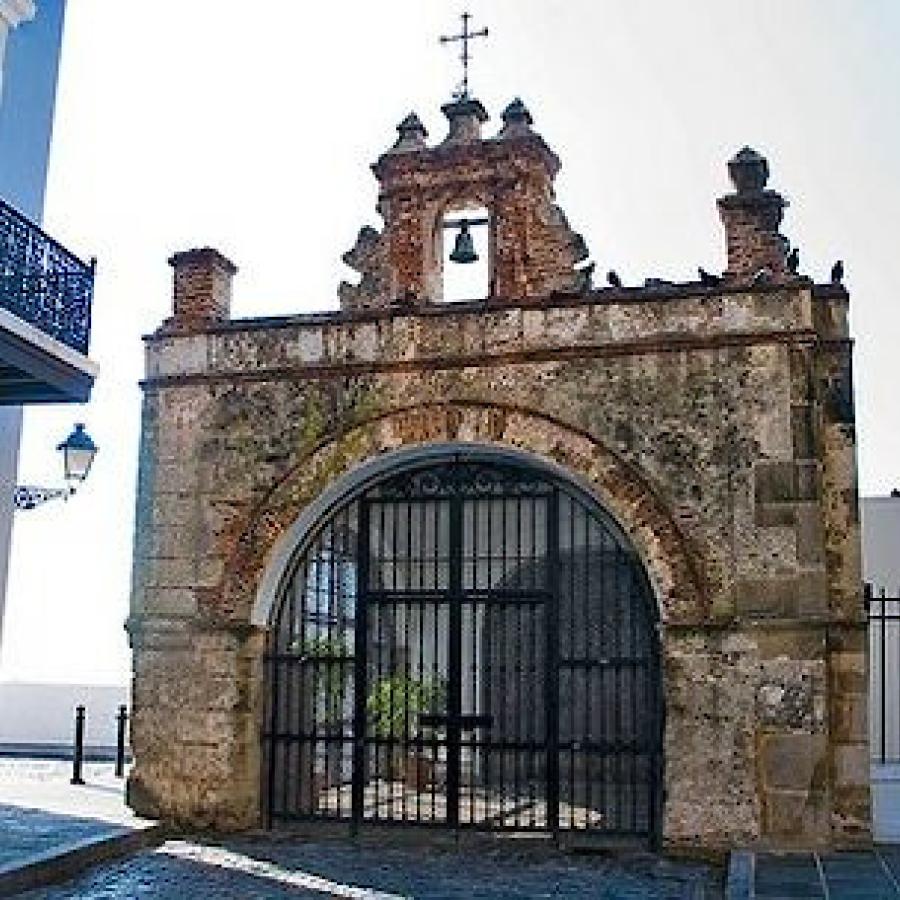
Capilla del Cristo
Another landmark is the Capilla del Cristo. This small sanctuary was built at the top of the walls of the city, an unusual decision for colonial times. Legend has it that two men were racing their horses down the street and one of them fell over the cliff and survived. This inspired the construction of a sanctuary dedicated to the saints of health. Its altar is made of embossed silver and the room is decorated with two José Campeche paintings.
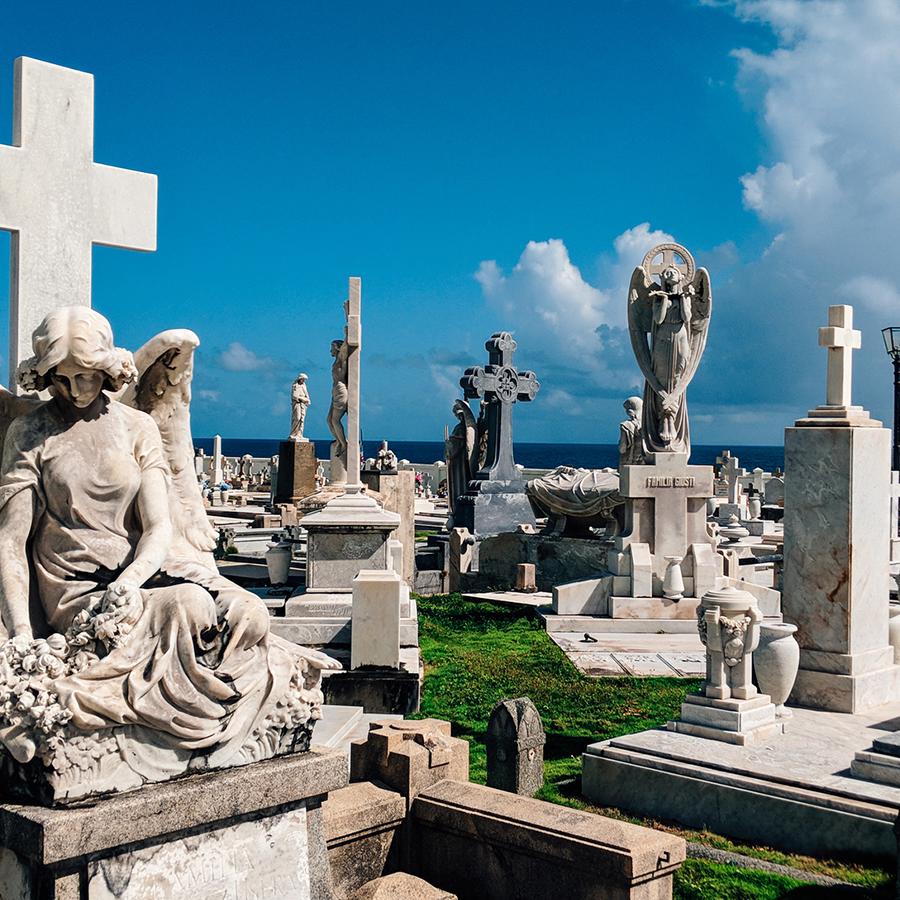
The historic Santa María Magdalena de Pazzis Cemetery in Old San Juan.
Santa María Magdalena de Pazzis Cemetery
This peculiar cemetery was established in the 19th century. The Spaniards built it outside the city walls because of their strong fear of the afterlife. Its oceanfront location derives from a superstitious belief that the deceased started a journey over to “the great beyond” and being close to the sea symbolized the beginning of eternity. This cemetery is the final resting place of Puerto Rico’s most prominent natives and residents.

Casa Blanca Museum in Old San Juan.
Casa Blanca
Turned into a museum, this is the oldest residence in Old San Juan. Casa Blanca was built to be the home of Puerto Rico’s first governor, Juan Ponce de León. Sadly, Ponce de León died before he could occupy it, but it was left for his descendants to reside in.

Cathedral Basilica of Saint John the Baptist, or La Catedral.
Catedral de San Juan
When compared to the rest of America, the structure of this church is a rare example of medieval architecture during Spanish ruling in the New World. The Catedral de San Juan is the second oldest church in the Americas, after the one built in the Dominican Republic. It was there that the world’s first archdiocese was founded.

The beautiful Governor's Mansion, aka La Fortaleza.
La Fortaleza
Officially named “El Palacio de Santa Catalina de Alejandría” (the Palace of St. Catherine of Alexandria), La Fortaleza is the oldest state residence of the New World still in use. Originally built between 1533 and 1540, La Fortaleza has served as a fortress, a prison, and an arsenal, and is now the official residence of the Governor of Puerto Rico. This executive palace conserves traditions such as candlelit-only dining rooms and original Spanish objects from the colonial era.
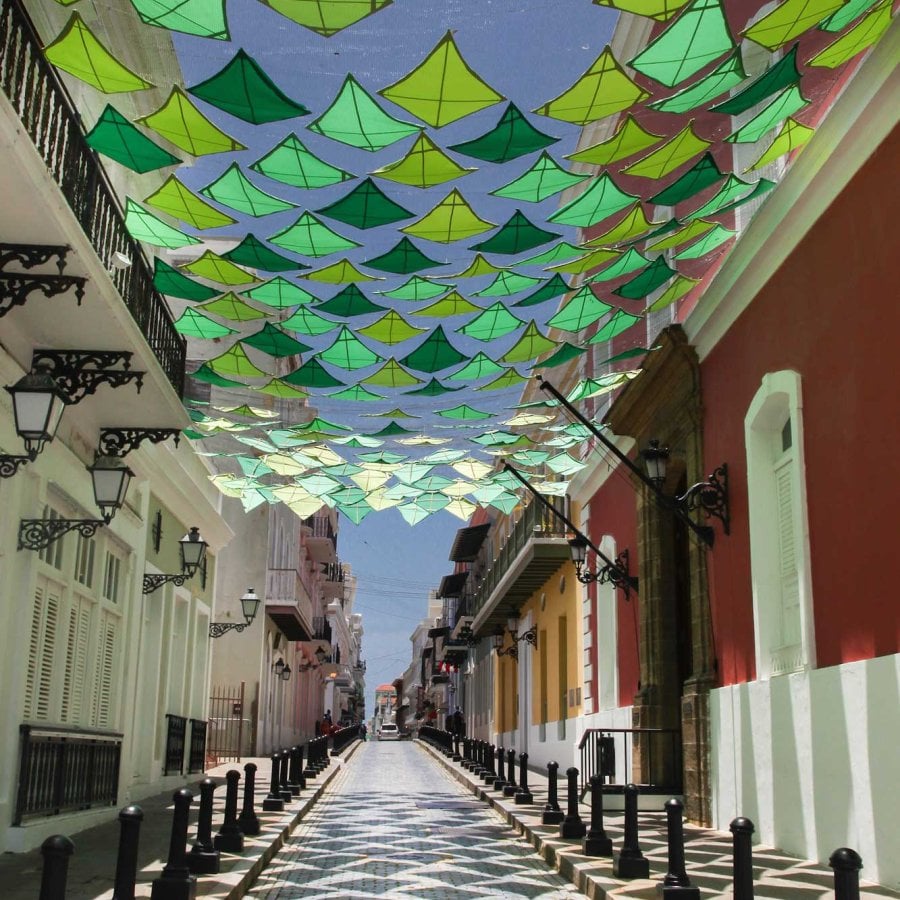
Calle Fortaleza (Fortaleza Street)
Extending eastward from the Governor's Mansion is Calle Fortaleza, which is one of Old San Juan's oldest and most photogenic streets. You may know it as "Umbrella Street" since it became famous for the multicolored umbrellas that were suspended above parts of the street. The original umbrellas have since been replaced with other decorative canopies – from butterflies to kites to an enormous Puerto Rican flag – so be sure to visit to get a picture in front of the latest installation! While you're here, pop into some of the street's many shops and restaurants, like Barrachina, which is known as one of the birthplaces of the piña colada.
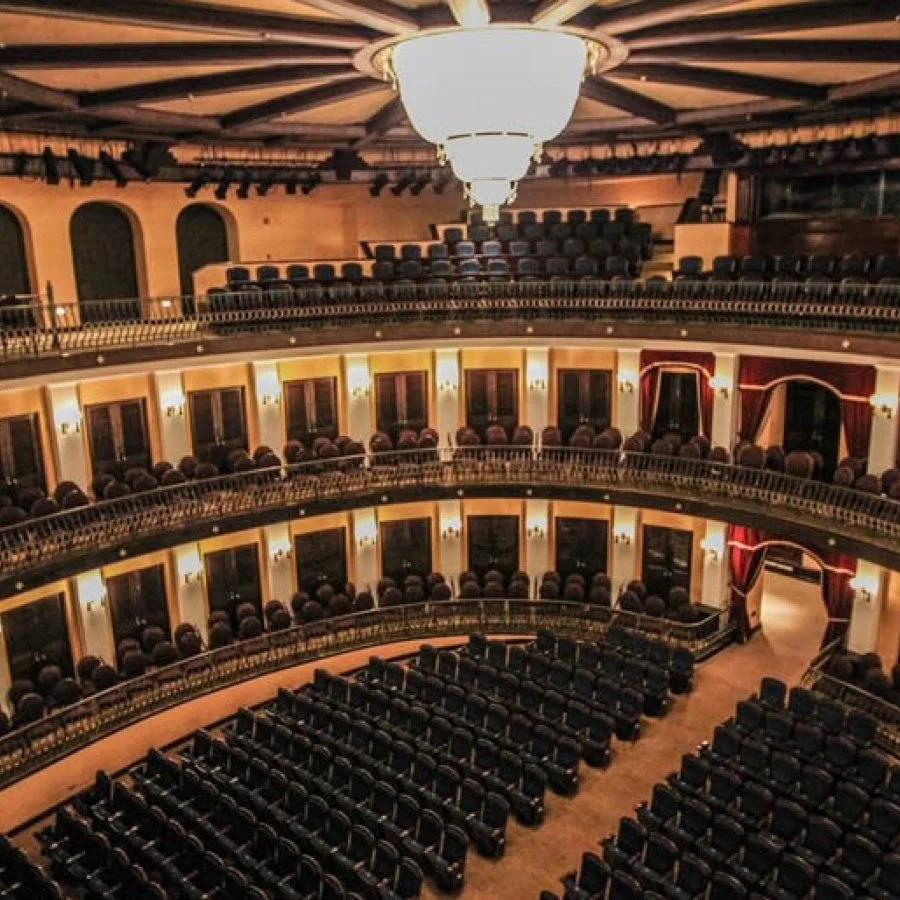
Teatro Tapia is the oldest free-standing theater in Puerto Rico, and is still in use today.
Teatro Tapia
Also known as the municipal coliseum, this architectural gem was built in 1832 and named after Alejandro Tapia y Rivera, the father of Puerto Rican literature. Teatro Tapia is the oldest permanent theater in Puerto Rico and among the oldest free-standing stages still in use under the U.S. flag.
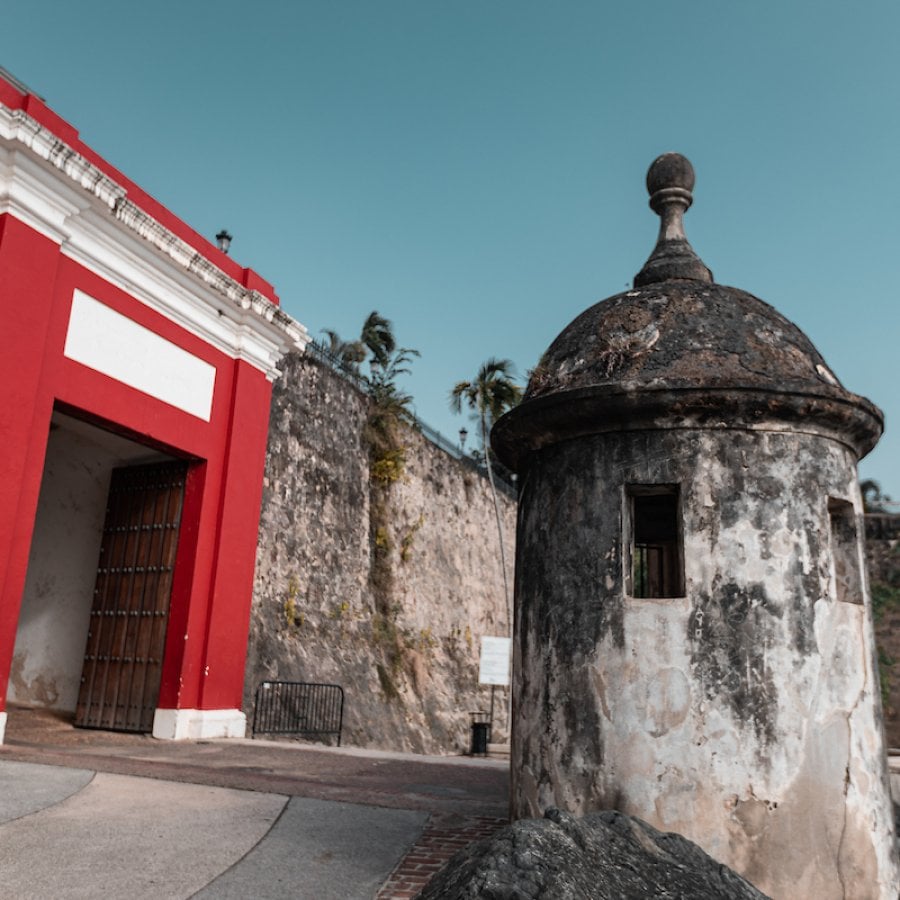
View of the Puerta de San Juan, the original entrance to the walled city when it was built in the 16th century.
Puerta de Agua or Puerta de San Juan
The Puerta de San Juan is the most colorful and known of all the entrances to the walled city. It was the main gate through which the priests and governors made their entrance to their investiture ceremonies.
More Old San Juan Landmarks Not to Miss:
Seminario Conciliar de San Ildefonso
The original building was completed in 1832 and it was commissioned by the first Puerto Rican Bishop, Fray Juan Alejo de Arizmendi. The seminar became a cornerstone in the development of public education in Puerto Rico, under the long teaching tradition of the Catholic Church. The Dome at the Chapel is a work of art worthy of a visit.
Department of Treasury Annex
Located in the main square Plaza de Armas, it served as the depository of the royal treasure on the Island. It was also the first headquarters of the provincial deputation that preceded the modern-days legislative branches.
Comment Guidelines
We value your thoughts and want to foster a respectful and engaged community. As such, we ask that you adhere to the following guidelines when posting comments
- Please ensure your opinions are expressed respectfully.
- We won’t remove comments that engage in courteous debate but hate speech or any form of profanity will not be tolerated. This also applies to the inappropriate use of emojis or hashtags.
- Do not downvote or dislike a comment simply because you disagree with another person’s views.
- Self-promotion and external links are not allowed and will be removed.
- Avoid sharing private information about yourself or others. Doxing (the act of leaking personal information with harmful intent) is strictly prohibited and will result in a ban.
- Comments that are off-topic will be deleted.
Paradise for Your Inbox
Get travel inspiration, news, tips and more delivered monthly.

